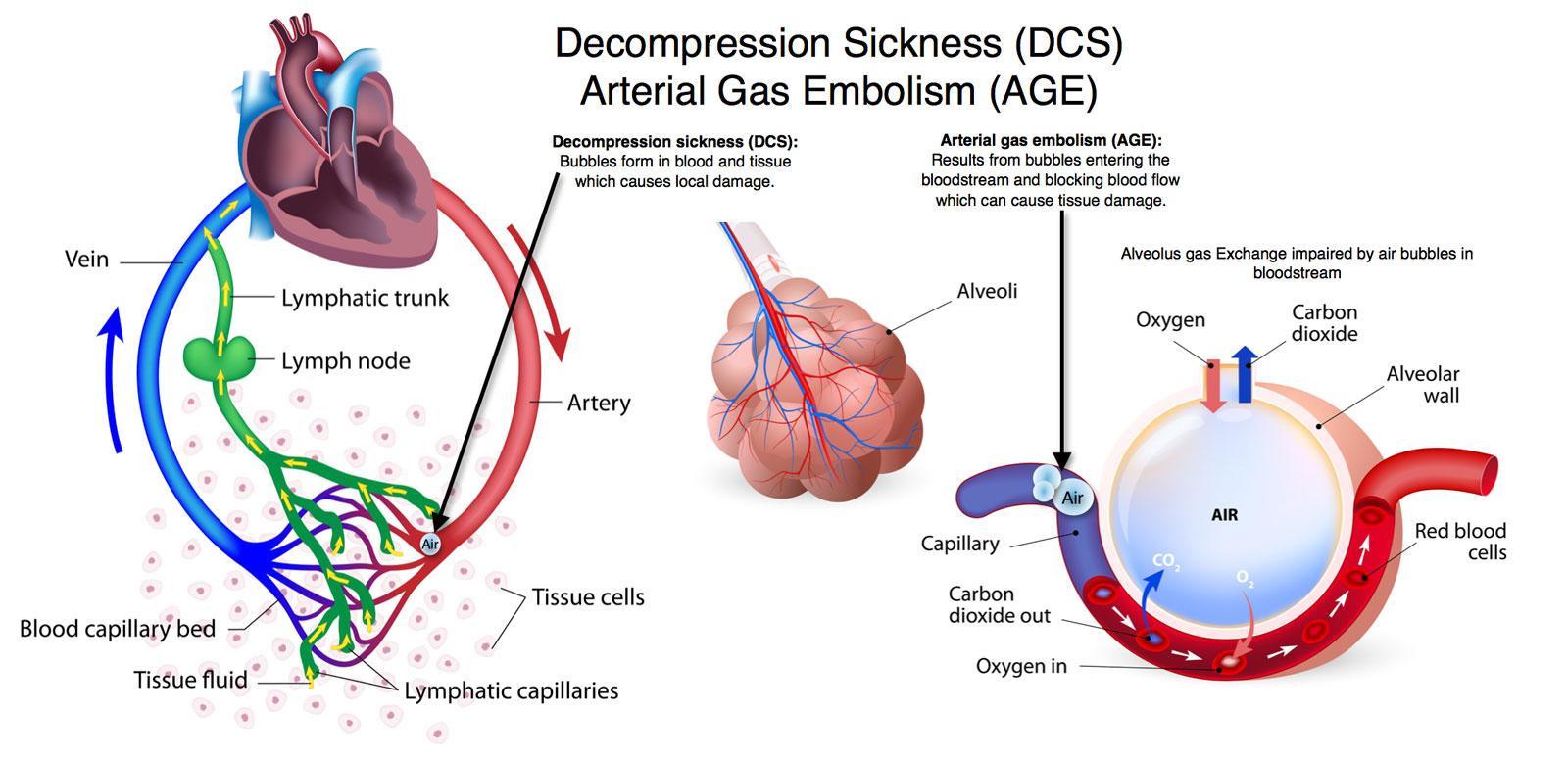6 min read

In June 2024, the NASA Office of the Chief Health and Medical Officer (OCHMO) Standards Team hosted an independent assessment working group to review the status and progress of research and clinical activities intended to mitigate the risk of decompression sickness (DCS) related to patent foramen ovale (PFO) during spaceflight and associated ground testing and human subject studies.
Decompression sickness (DCS) is a condition which results from dissolved gases (primarily nitrogen) forming bubbles in the bloodstream and tissues. It is usually experienced in conditions where there are rapid decreases in ambient pressure, such as in scuba divers, high-altitude aviation, or other pressurized environments. The evolved gas bubbles have various physiological effects and can obstruct the blood vessels, trigger inflammation, and damage tissue, resulting in symptoms of DCS. NASA presently classifies DCS into two categories: Type I DCS, which is less severe, typically leads to musculoskeletal symptoms including pain in the joints or muscles, or skin rash. Type II DCS is more severe and commonly results in neurological, inner ear, and cardiopulmonary symptoms. The risk of DCS in spaceflight presents during extravehicular activities (EVAs) in which astronauts perform mission tasks outside the spaceflight vehicle while wearing a pressurized suit at a lower pressure than the cabin pressure. DCS mitigation protocols based on strategies to reduce systemic nitrogen load are implemented through the combination of habitat environmental parameters, EVA suit pressure, and breathing gas procedures (prebreathe protocols) to achieve safe and effective mission operations. The pathophysiology of DCS has still not been fully elucidated since cases occur despite the absence of detected gas bubbles but includes right to left shunting of venous gas emboli (VGE) via several potential mechanisms, one of which is a Patent Foramen Ovale (PFO).

Arterial gas embolism (AGE): Results from bubbles entering the bloodstream and blocking blood flow which can cause tissue damage.
From: Dr. Schochet & Dr. Lie, Pediatric Pulmonologists
Reference OCHMO-TB-037 Decompression Sickness (DCS) Risk Mitigation






